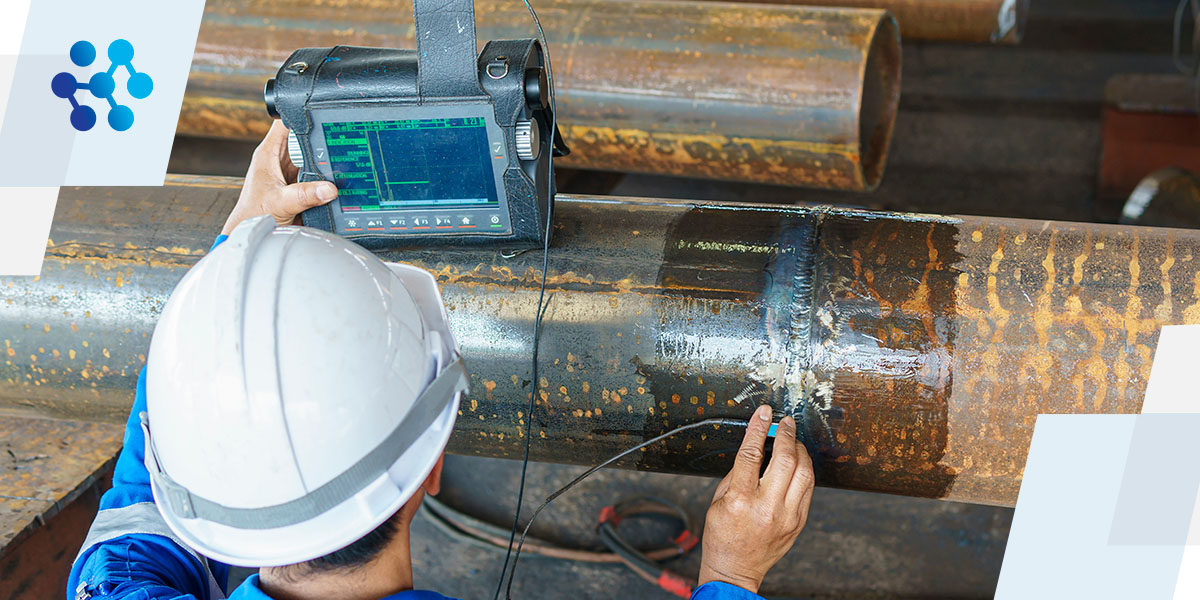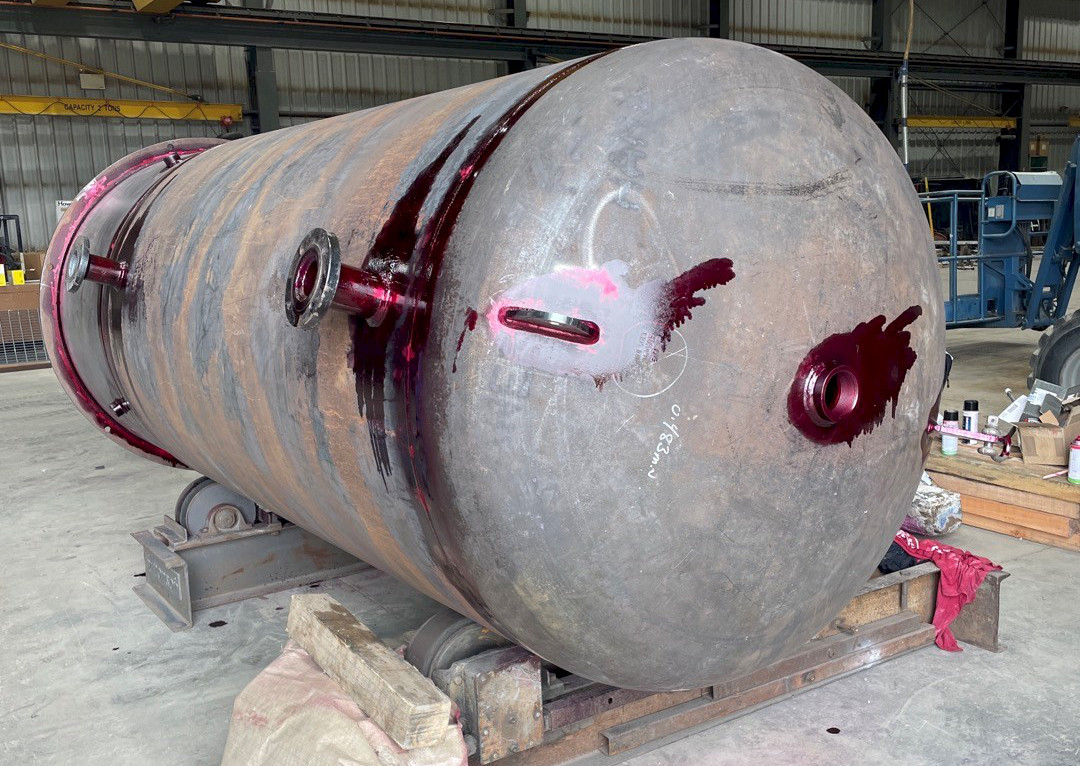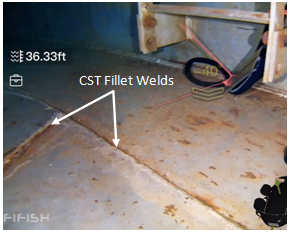An In-depth Summary of Tank Welding Evaluation Standards and Methodologies for Improved Weld Top Quality and Efficiency
The relevance of welding examination criteria in the production of storage tanks can not be overemphasized, as they function as the backbone for making sure weld integrity and operational dependability. Different assessment methods, including aesthetic evaluations and progressed non-destructive screening techniques, are important in recognizing possible flaws that could endanger performance. Sticking to regulative standards not just enhances weld quality however likewise minimizes the danger of expensive failings. As we explore the nuances of these methods, it ends up being necessary to think about how a methodical strategy can transform present methods and bring about considerable enhancements in results.
Importance of Welding Examination Requirements

Welding examination requirements include a series of requirements, including material specifications, welding procedures, and qualifications of workers associated with the welding process. By enforcing these standards, organizations can methodically recognize and fix possible issues, thus minimizing the likelihood of expensive repair work or devastating failures. Additionally, strenuous evaluation practices promote a culture of accountability and precision, motivating welders to maintain high levels of workmanship.

Typical Welding Inspection Strategies


Ultrasonic Testing (UT) is another common strategy, making use of high-frequency acoustic waves to discover internal problems that might not show up on the surface. This approach is especially reliable for determining spaces or additions within the weld steel. Magnetic Fragment Testing (MT) is likewise widely used, specifically for ferromagnetic materials, as it exposes surface and near-surface defects via the application of magnetic fields and ferrous fragments.
Furthermore, Fluid Penetrant Screening (PT) finds surface-breaking issues by using a penetrant to the weld and after that making use of a designer to draw out the penetrant. Each of these methods adds to a comprehensive examination approach, guaranteeing that welds satisfy the stringent high quality criteria needed in tank building and construction.
Governing Standards and Compliance
Regulatory requirements and compliance are vital components in making certain the safety and security and integrity of bonded structures in storage tank building and construction - Tank Welding Inspection. These requirements serve to develop minimum requirements for material buildings, welding procedures, and evaluation practices, consequently minimizing the risk of structural failures and boosting overall performance
Secret organizations, such as the American Society of Mechanical Designers (ASME) and the American Welding Society (AWS), provide standards that are widely adopted in the industry. Conformity with these requirements not only makes certain adherence to finest methods but also satisfies legal and look at these guys contractual obligations, protecting the passions of stakeholders.
Regulative bodies typically mandate adherence to specific codes, such as ASME Code Section IX for welding certifications and API 650 for bonded storage tanks. These codes detail requirements for welding strategies, qualifications of workers, and screening approaches to verify weld integrity.
Routine audits and evaluations are critical to maintaining compliance, as they assist identify inconsistencies from read this developed standards. Non-compliance can result in substantial penalties, job hold-ups, and safety dangers. Thus, a robust understanding of regulative criteria and a commitment to compliance are vital in accomplishing high-quality and resilient bonded container structures.
Non-Destructive Testing Methods
How can the integrity of welded structures be guaranteed without creating damages? Non-destructive screening (NDT) techniques supply a durable remedy, making it possible for examiners to examine weld high quality without endangering the product - Tank Welding Inspection. Among the most usual NDT methods are ultrasonic screening (UT), radiographic testing (RT), magnetic particle screening (MT), and dye penetrant screening (PT)
Ultrasonic testing uses high-frequency audio waves to identify internal flaws and define product residential or commercial properties. It gives precise measurements and is specifically efficient for thick materials. Radiographic testing involves passing X-rays or gamma rays through the weld, Get More Info producing photos that reveal architectural problems such as splits or voids. This method is indispensable for analyzing the stability of complex welds.
Magnetic particle testing is matched for ferromagnetic materials, where electromagnetic fields expose surface and near-surface interruptions. Dye penetrant screening utilizes a fluid color to highlight surface-breaking flaws, making it an efficient method for non-porous materials.
Each of these NDT techniques has unique advantages, enabling comprehensive analyses tailored to certain products and welding procedures. By carrying out these methods, sectors can guarantee the integrity and security of bonded frameworks, eventually enhancing overall performance.
Enhancing Weld Quality Via Evaluation
Effective examination plays a crucial role in enhancing weld high quality, offering as a vital checkpoint in the construction procedure. By determining prospective issues early, assessments mitigate the danger of compromised structural honesty and ensure compliance with industry standards. Using a combination of visual evaluations, non-destructive screening (NDT) methods, and mechanical analyses, inspectors can identify concerns such as porosity, splits, and insufficient blend.
Executing a robust assessment procedure not only improves the total quality of welds yet likewise cultivates a society of responsibility among welders and makers. Regular training and accreditation of inspection personnel make sure that they are outfitted with the necessary abilities to acknowledge and resolve possible issues effectively. This aggressive method decreases rework and connected costs, eventually contributing to predict effectiveness.
In addition, extensive paperwork of assessment findings offers valuable insights right into recurring issues, promoting constant improvement in welding practices. By leveraging innovative modern technologies, such as automated ultrasonic testing or digital radiography, weld high quality can be enhanced via extra accurate analyses. To conclude, a strenuous assessment process is indispensable in accomplishing top notch welds, ensuring safety and security, integrity, and long life in tank fabrication.
Verdict
To conclude, the application of rigorous storage tank welding assessment requirements and techniques is necessary for ensuring weld honesty and efficiency. By making use of a mix of visual assessments, non-destructive testing methods, and adherence to governing criteria, organizations can successfully identify and alleviate prospective flaws. Fostering a society of responsibility amongst welders even more boosts the high quality of welding processes. Inevitably, these methods contribute to lowered architectural failures, lower repair costs, and boosted functional performance within the market.